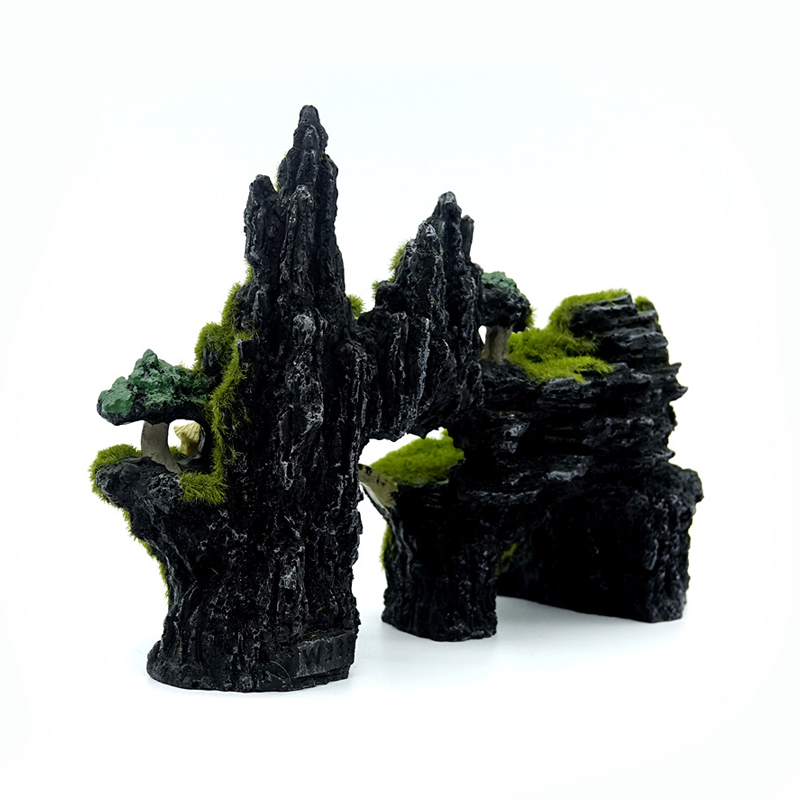Three basic forms of stone mountain carving: round carving, relief carving and openwork carving

① round carving. The so-called round sculpture refers to a three-dimensional sculpture that is uncompressed and can be appreciated from multiple directions and angles. There are also various techniques and forms, including realistic and decorative, concrete and abstract, indoor and outdoor, easel and large-scale city sculptures, colored and non-colored, etc.; sculpture content and subject matter It is also rich and colorful, which can be characters, animals, or even still life; the material is even more colorful, including stone, wood, metal, clay sculpture, textile, paper, plant, rubber and so on.
As one of the modeling techniques of sculpture, round carving has a wide range of applications, and it is also the most common form of stone mountain carving for ordinary people.
② Relief. The so-called relief is the product of the combination of sculpture and painting. It uses compression to process objects, and uses perspective and other factors to express three-dimensional space, and it can only be viewed from one or two sides. Reliefs are generally attached to another plane, so they are used more in architecture and can often be seen on utensils. Due to its compressed characteristics, it occupies less space, so it is suitable for decoration in many environments. In recent years, it has played an increasingly important role in urban beautification. Reliefs are as rich and colorful as round sculptures in content, form and material.
It mainly has several forms such as shrine type, high relief, shallow relief, line carving, and hollow type.
The ancient grotto sculptures in our country can be attributed to shrine sculptures, which can be divided into realistic, decorative and abstract according to different modeling techniques;
High relief refers to a form of small compression, large ups and downs, close to round carving, or even semi-round carving. This kind of relief has a strong contrast between light and dark, and the visual effect is outstanding;
The bas-relief has a large compression and small ups and downs. It not only maintains a kind of architectural planarity, but also has a certain sense of volume and ups and downs;
Line engraving is a combination of painting and sculpture. It is produced by light and shadow, using light instead of pen, and even has some subtle ups and downs, giving people an elegant and reserved feeling;
③ Openwork. The relief without the bottom plate is called open carving (hollow carving). The bottom plate of the so-called relief is removed, so as to produce a variety of negative spaces, and make the contour lines of the negative space and the positive space have a rhythm of mutual transformation. This technique was often used on doors, windows, railings and furniture, and some can be viewed from both sides.
1. Beating rough blanks is generally based on the plastic three-dimensional clay draft. First, use a brush to draw a general outline on the material, and then remove the excess material other than the drawn outline with the help of an ax and carving tools, and then chisel the rough blank. The specific operation At the same time, put the material on the blanking bench and tie it with a rope, or place it on the ground and clamp the mat with your feet to punch the blank. The large wide flat chisel and the large reverse round chisel are used alternately. The morphological proportional relationship, using a geometric cube shape, emphasizes the big turning point and the volume direction.
2. Carving fine blanks. This process is to correct the shortcomings of the previous process and strengthen the depiction of details. Smaller flat chisels and round chisels can be used. Knife poking blank), in order to carve out the character's body structure, facial features and expressions, and the relationship between the virtual and the real, especially in the processing of the characters' dresses, pay attention to the expression methods of virtual and real, movement and stillness, wet and dry, straight, gathering and dispersing, hanging and hanging. .
3. Smoothing, this is an exquisite process, which is further processed on the basis of fine blanks, but it is not a simple repetition. The task of lightening is to remove unnecessary knife marks and at the same time remove the The subtle shapes are clearly depicted, and strive to achieve a smooth and smooth artistic effect with distinct textures. The tools for polishing are small flat knives, small round knives, triangular knives, etc.
Sculpture is not only divided into forms, but also has a variety of materials, such as: stainless steel, iron art, fiberglass, resin, cast copper, metal, clay sculpture, foam and so on.



